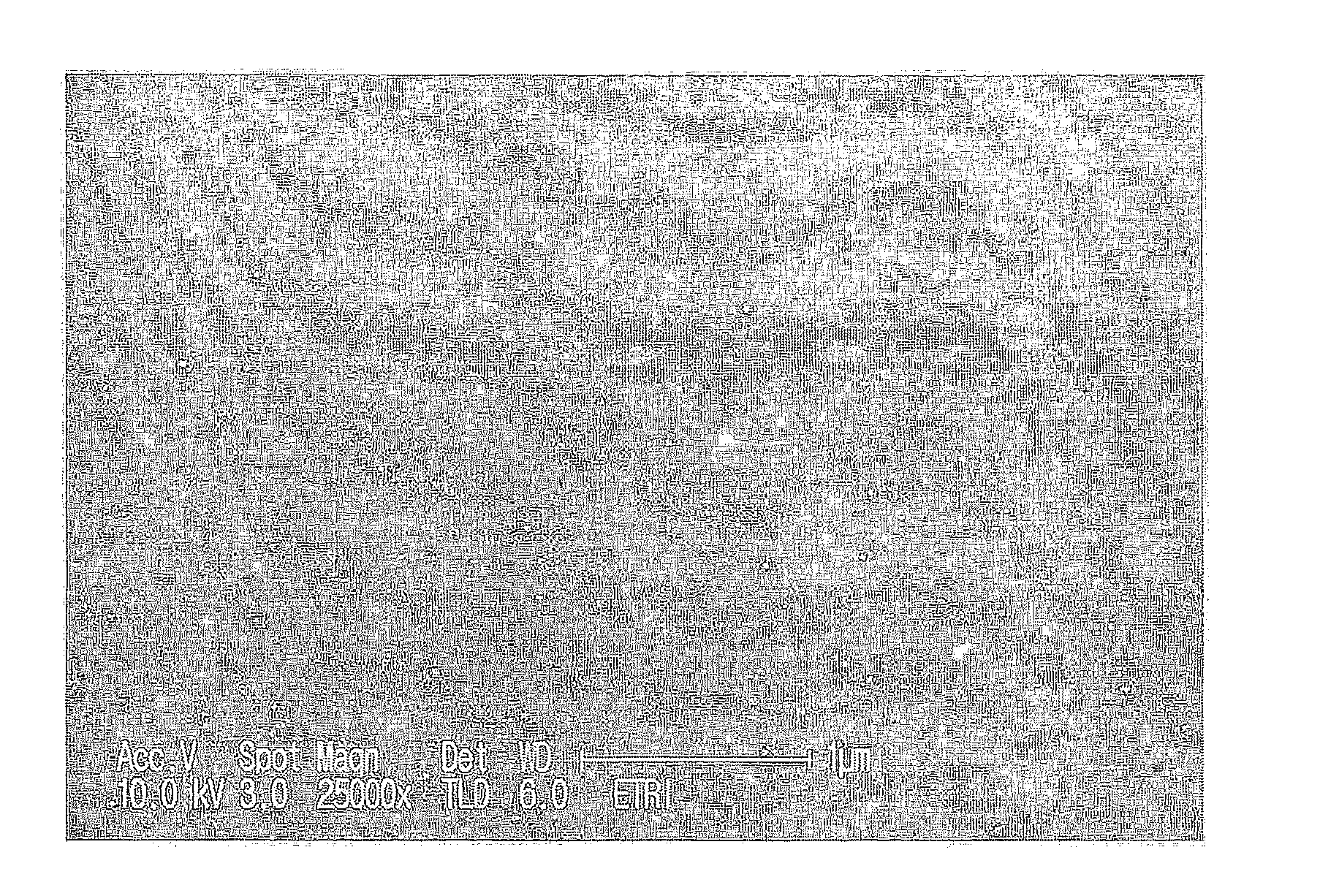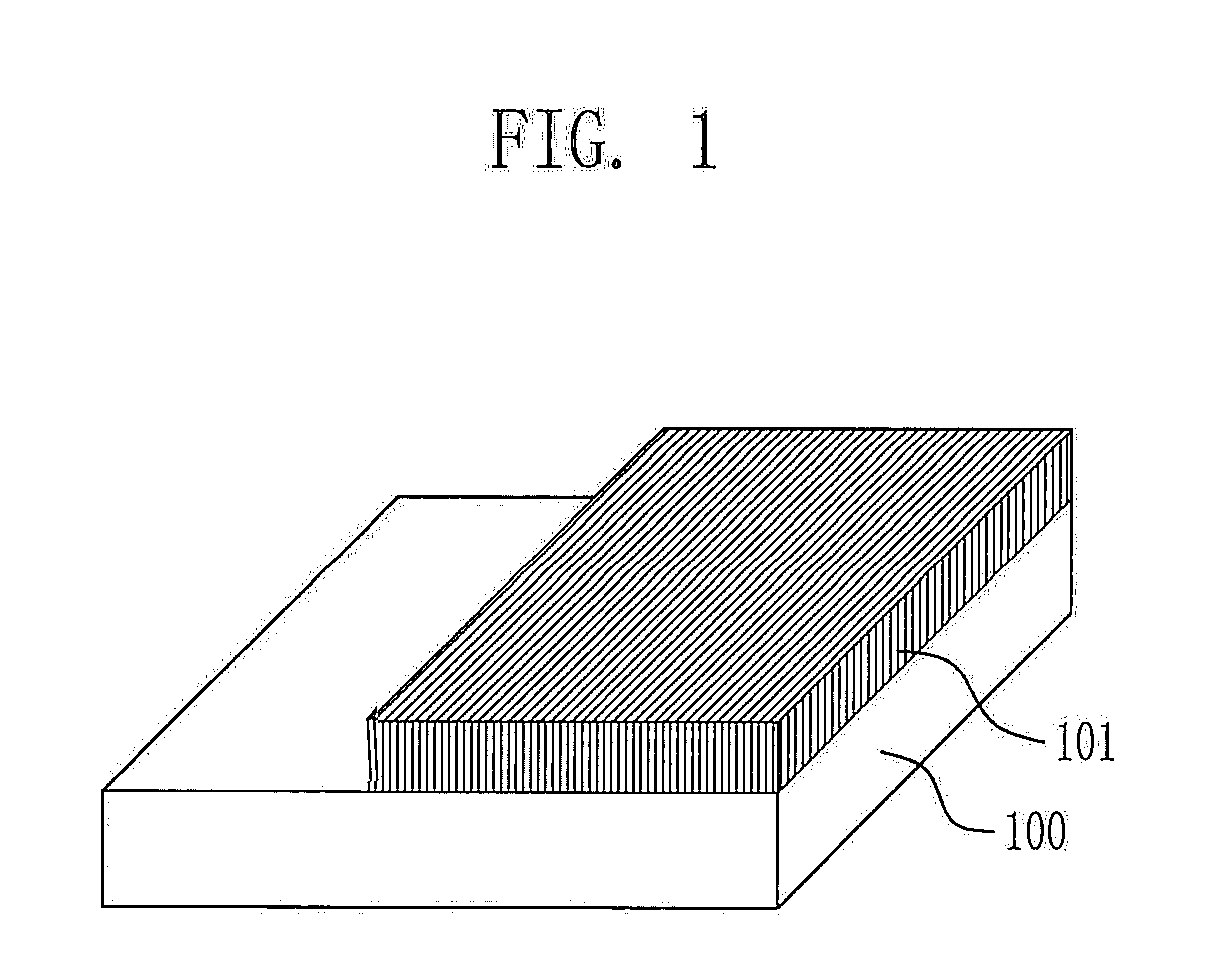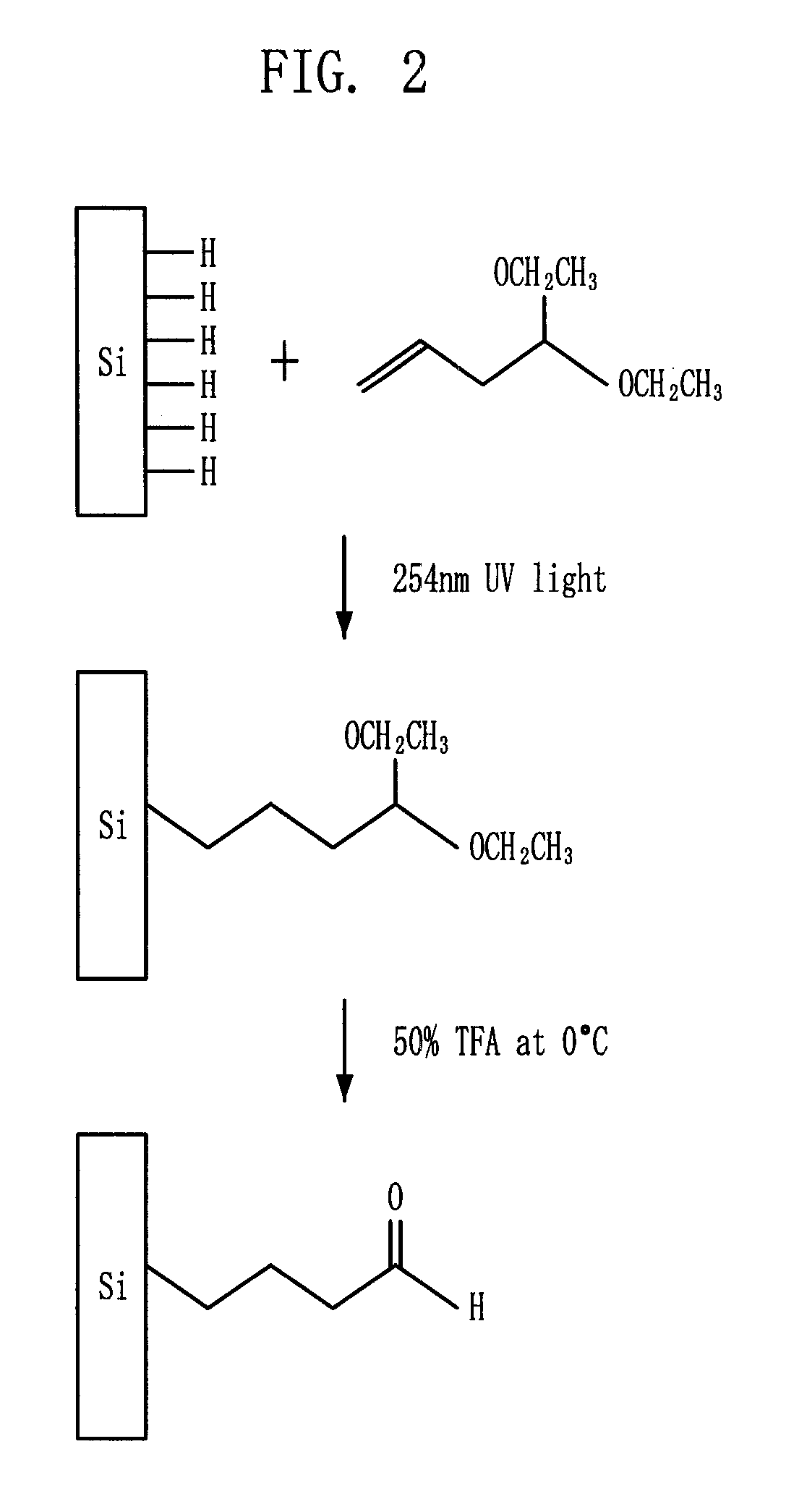Method for selectively functionalizing non-modified solid surface and method for immobilizing active material on the functionalized solid surface
a technology of non-modified solid surfaces and functionalized solid surfaces, which is applied in the direction of nuclear engineering, instruments, transportation and packaging, etc., can solve the problems of difficult control of reaction conditions for fabricating monomolecular films, deoxyribonucleic acid, and difficult to immobilize active materials, so as to reduce the perturbation effect and simplify the manufacturing process
- Summary
- Abstract
- Description
- Claims
- Application Information
AI Technical Summary
Benefits of technology
Problems solved by technology
Method used
Image
Examples
1st example
1st Example
Functionalization of Silicon Substrate Surface
[0043]1-1: Hydrogen Functionalization of Unmodified Silicon Substrate Surface
[0044]Referring to FIG. 1, a silicon substrate was immersed in 2% Buffered Oxide Etch (BOE; NH4F:HF=25:1) for 30 seconds. As a result, a modified silicon oxide substrate surface was not functionalized, and an unmodified silicon substrate surface was functionalized into hydrogen.
[0045]1-2: Aldehyde Group Functionalization of Hydrogen-Silicon Surface using Photo-Reaction
[0046]3-butenal diethyl acetal was added to the substrate surface functionalized like the embodiment 1-1. Then, unsaturated carbon of 3-butenal diethyl acetal was combined with the silicon substrate surface by radiating about 254 mm of ultraviolet rays and exposing the functionalized substrate at nitrogen atmosphere for about two hours. As a result, the end of the surface was functionalized into aldehyde protecting group (acetal). The modified silicon oxide substrate surface was not func...
2nd embodiment
2nd Embodiment
Active Material Immobilization on Unmodified Silicon Substrate Surface
[0048]2-1: DNA Immobilization on Unmodified Silicon Substrate Surface
[0049]DNA containing 12 base sequences having end amino group is reacted with the silicon substrate surface functionalized into aldehyde group, which was obtained from the first embodiment, by exposing the DNA to the silicon surface in a reducing agent NaBH3CN at room temperature for about five hours. As a result, the DNA was immobilized on the silicon surface through carbon-nitrogen bonding which was strong and stable chemical bonding. The aldehyde group on the silicon substrate surface formed the chemically stable carbon-nitrogen bonding through chemical reaction with DNA end amine, thereby immobilizing DNA only on the silicon substrate surface.
[0050]2-2: Protein Immobilization on Unmodified Silicon Surface
[0051]A human-immunoglobulin G (IgG) reacted with the silicon substrate surface functionalized into aldehyde group, which was ...
1st experimental example
1st Experimental Example
Experiment for Confirming the DNA Immobilization on Unmodified Silicon Substrate Surface
[0052]In order to confirm that DNA is immobilized only on an unmodified silicon substrate surface, an experiment was performed as follows. After remaining aldehyde group, which was unreacted with DNA in the embodiment 2-1, was blocked using ethanolamine, the DNA immobilized on the silicon surface was hybridized with complementary DNA conjugated with about 13 nm of Au nanoparticles.
[0053]The unreacted and remaining aldehyde group was substituted to hydroxyl group having weak reactivity with DNA by exposing the silicon substrate surface to ethanolamine and NaBH3CN.
[0054]Then, about 13 nm gold nanoparticle was conjugated with complementary DNA, which could be complementary-bonded with the immobilized DNA on the silicon surface in about pH 7 of 0.3M NaCl, about 0.025% SDS, and 10 mM phosphate buffer solution for about six hours. After reacting, it was cleaned using 0.3M an amm...
PUM
 Login to View More
Login to View More Abstract
Description
Claims
Application Information
 Login to View More
Login to View More - R&D
- Intellectual Property
- Life Sciences
- Materials
- Tech Scout
- Unparalleled Data Quality
- Higher Quality Content
- 60% Fewer Hallucinations
Browse by: Latest US Patents, China's latest patents, Technical Efficacy Thesaurus, Application Domain, Technology Topic, Popular Technical Reports.
© 2025 PatSnap. All rights reserved.Legal|Privacy policy|Modern Slavery Act Transparency Statement|Sitemap|About US| Contact US: help@patsnap.com



